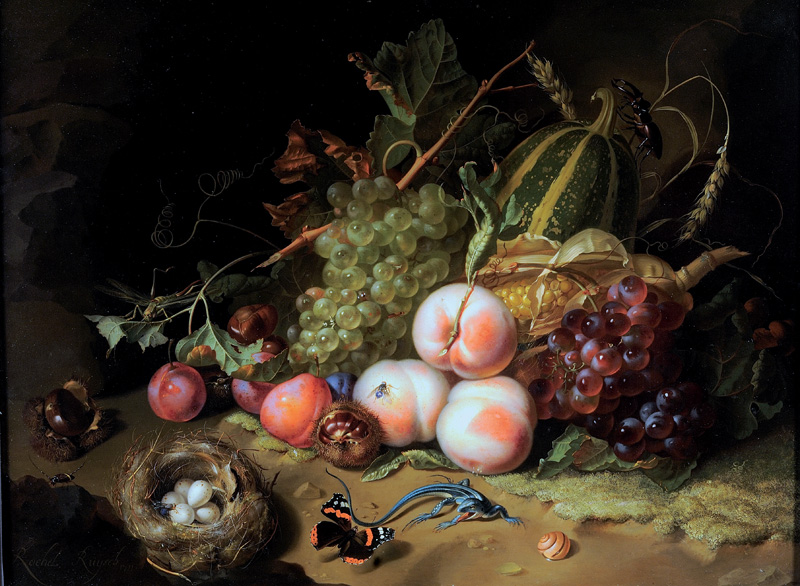A Still Life painting is a piece that features an arrangement of inanimate objects as its subject. Usually, these items are on a table and often include organic objects such as fruit and flowers and household items.
Northern Renaissance artists popularised still life imagery with their flower paintings. These pieces typically showcase colourful flora when they are blooming. These paintings became important in the early 17th century, when Northern Renaissance artists became interested in creating realistic studies of everyday items.
The Dutch Golden Age artists created vanities paintings. These paintings are inspired by the genre memento mori which translates to “remember that you have to die” in Latin. These pieces often pair cut flowers with objects like human skulls, candles and hourglasses to comment on the short nature of life.
Still life were a great opportunity to display skill in painting textures and surfaces in great detail and with realistic light effects. Food of all kinds laid out on a table, silver cutlery, intricate patterns and subtle folds in table cloths and flowers all challenged painters. Mostly all still life had a moralistic message, usually concerned with the shortness of life; This is known as the vanitas theme.

Vanitas Paintings – A Metaphor for Transience
Symbolism was present in every form of Still Life but never more significant than in Vanitas work where everything spoke of the inevitability of death: Skull – reminder of the certainty of death; The watch or hourglass – the brevity of life. Flowers and butterflies can be interpreted in the same way, and a peeled lemon was, like life, attractive to look at but bitter to taste. Art Historians debate how much, and how seriously, the vanitas theme is implied in still life paintings without explicit imagery such as a skull.

